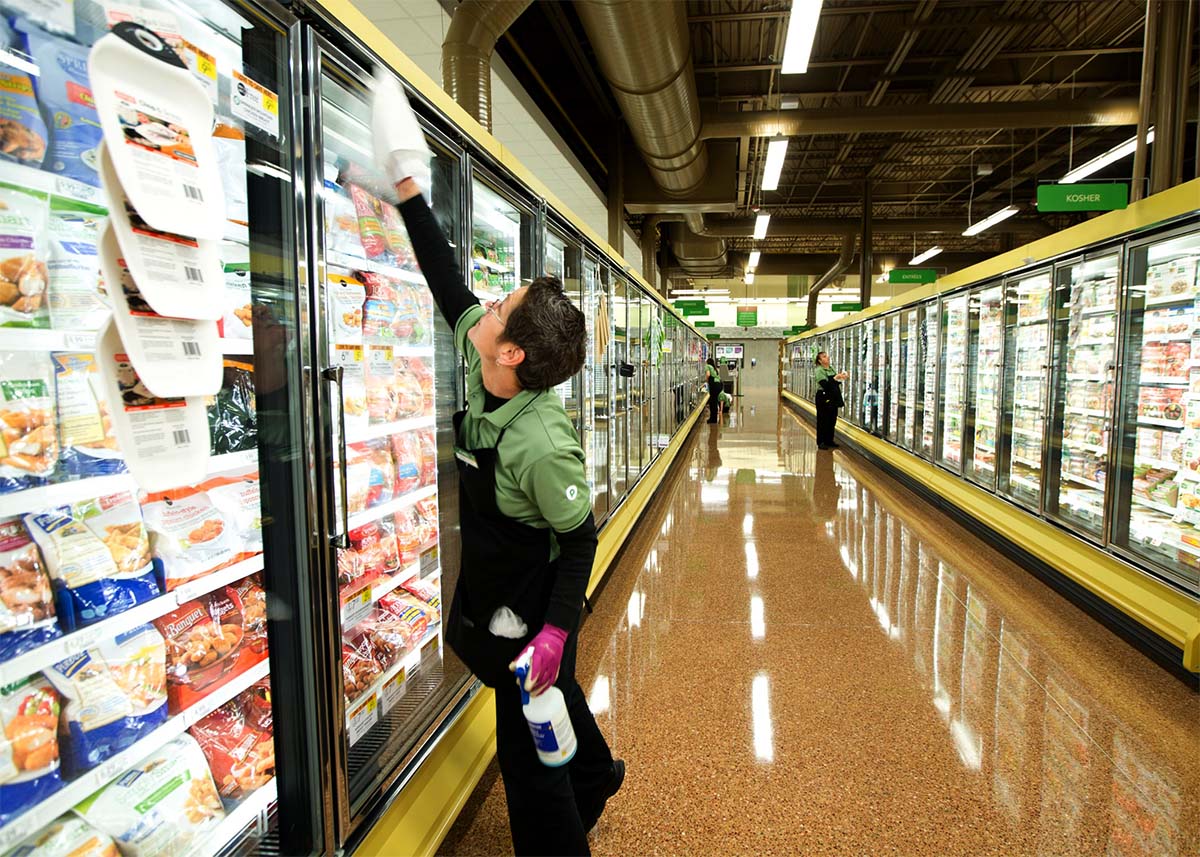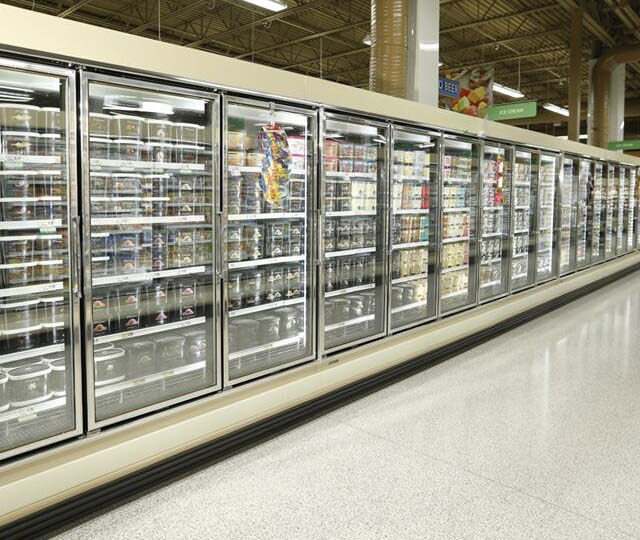✕
As supermarkets move away from hydrofluorocarbons (HFCs) and toward more sustainable solutions, CO2 refrigeration systems have become a preferred alternative. However, making the transition from HFCs to CO2 (R-744) is an intricate process that involves several strategic and operational considerations for small and independent food retailers as well as large chains. This article will examine some of the steps retailers should consider when making the transition as well as a use study showcasing Publix’s evolution from HFCs to R-744.
HFCs to CO2: A Step-By-Step Guide
Before investing in a refrigeration upgrade, retailers must assess whether investing in a natural refrigerant, such as R-744, is a worthwhile venture.
“Retailers need to make sure they’re putting their money into something that will offer a good return,” said Ed Estberg, technical lead at the North American Sustainable Refrigeration Council (NASRC), who has 30-plus years in the refrigeration industry. “Find a location that’s a winner — one that’s sure to remain in the chain’s long-term plans. Generally, it’s best to target high-volume stores because they offer a sufficient pay-off.”
For leased locations, ensure the lease terms align with the equipment’s depreciation schedule. Renegotiating lease agreements to include contributions from landlords — such as infrastructure upgrades or cost-sharing — can help offset expenses.
“Make sure your landlord is on board with the remodel and understands what you intend to do,” said Estberg. “You certainly don’t want to get in a position where you do a remodel and two years later, you have to go in and start negotiating a new lease. The landlord knows you’re about to put $4 million into this building, so he’s sort of got you over the barrel.”
Additionally, when assessing the budget, don’t forget to include the equipment — new and old.
“Is your existing equipment fully depreciated and free of any financial obligations, such as leases or financing agreements,” asked Estberg. “Keep your customers happy and keep competition away.”
Finances are always a critical piece of any refrigeration project. CO2 presents as an attractive option because of its inexpensive price tag, typically trading between $1 and $4 per pound, whereas some synthetic refrigerants regularly exceed $15-$20 per pound. With the decrease in production of HFCs driven by the AIM Act, the cost of traditional HFC refrigerants are likely to see significant price increases in the short and long term.
Logistical and Structural Challenges
Supermarket administrators must account for logistical challenges when switching to CO2 refrigeration. Space constraints, equipment placement, and local regulations all impact the feasibility of an upgrade.
“Is there room on the roof for additional equipment,” asked Estberg. “Is there enough space in the existing mechanical room for the new equipment, Are there sightline restrictions? Is there a high-rise next door with tenants who don’t want to look down on the equipment? These are all important questions.”
One of the most common pitfalls during a store remodel is “scope creep,” the tendency for projects to expand beyond their original plan. While updating refrigeration systems, store managers may be tempted to rearrange departments or make additional aesthetic improvements, which can significantly increase costs. Establishing a clear, defined plan of action before beginning the transition is essential for keeping projects on budget and on schedule.
“Develop a plan and stick with it,” said Estberg. “Are you intending to move equipment? Are you going to move frozen foods from the corner to the center? Is the meat department moving from the left to the right? These moves may seem simple on paper but will likely require significant effort and equipment.”
Choosing the Right Service Provider
CO2 refrigeration systems require specialized knowledge, particularly when it comes to advanced control systems and pressure management. Retailers should ensure their service providers are well-versed in CO2 systems before the transition begins. If switching to a new service provider, properly vet the company before the remodel starts so techs can familiarize themselves with the project’s wants and needs.
“CO2 refrigeration systems rely on advanced digital controls, making remote monitoring an essential tool,” said Estberg. “Having a service company that can deal with the more sophisticated controls, regulators, valves, and cycles is extremely valuable.”
Internet-connected systems allow technicians to diagnose issues remotely, reducing response times and service costs. If cybersecurity is a concern, retailers can set up a dedicated internet connection separate from their store’s primary network.
“Security is always an issue,” he said. “It’s often worthwhile to pay the fee to have your telecommunications company drop a dedicated line to your controller.”
Selecting the Proper Equipment
When designing the refrigeration system, make sure the proper equipment is selected. Because, once the equipment’s in place, it’s extremely difficult to make significant changes.
For smaller stores, self-contained CO2 condensing units offer a simple, natural refrigerant solution, said Estberg.
These systems are typically best suited for convenience stores or small grocery stores under 10,000 square feet. Installation is relatively straightforward — units are placed on the roof and connected to the store’s refrigeration cases below.
“These units work best for stores with fewer than six or seven refrigeration systems,” said Estberg. “While these systems may be slightly less efficient than multi-compressor racks, they provide a viable option for retailers looking to make the transition with minimal disruption.”
Secondary Cooling Systems
Larger supermarkets — those 15,000 square feet and above — may opt for secondary cooling systems, where CO2 or glycol circulates as a cooling medium. These systems operate at lower pressures, reducing concerns about high-pressure CO2 compression.
One of the biggest advantages of secondary systems is that they often allow stores to retain their existing mechanical refrigeration infrastructure. This is particularly beneficial if the current system is relatively new and still has years of operational life left. Instead of replacing the entire refrigeration system, retailers may consider gradually converting sections of their store to CO2, spreading costs over multiple upgrade phases.
“These units offer a lot of flexibility when converting to a CO2 system,” Estberg said. “This is especially true when the existing mechanical system is in good shape. Saving portions of the machine room will save you time and money.”
Communicating with Customers and Employees
A supermarket remodel can be disruptive to both employees and customers. Clear signage explaining the purpose of the transition — whether it’s to improve sustainability or enhance the shopping experience — can help manage expectations and minimize frustration.
“Your remodel is likely going to make customers’ lives miserable for a few months,” said Estberg. “Put some signage up telling them why you’re doing what you’re doing. If you’re aiming to refresh the store and create a better shopping experience, let them know. If you’re aiming to improve your environmental position, let them know. A little signage scattered throughout the store is a small investment that will offer big returns.”
Publix Fully Commits to CO2
Publix, which operates 1,389 stores in eight states, has been on a steady path toward adopting CO2 refrigeration since 2010. Driven by sustainability goals, regulatory considerations, and long-term operational efficiency, CO2 refrigeration is becoming the standard for each of the chain’s new stores, with several transcritical CO2 systems already in place.

TRANSCRITICAL TRANSITION: CO2 refrigeration is becoming the standard for each of the chain’s new stores, with several transcritical CO2 systems already in place. (Courtesy of Publix)
Publix’s shift from HFCs to CO2 refrigeration has been a carefully planned, multiyear process, said Doug Milu, the supermarket’s refrigeration and energy program manager.
“As we look to a sustainable and carbon-neutral future, the use of advanced refrigeration technologies incorporating CO2 aligns with the Publix mission statement,” he said. “CO2 has supported our sustainability goals and helped us greatly reduce the weighted average of the GWP [global warming potential] in our stores. We believe it has a place here at Publix.”
One of the key considerations in Publix’s transition is the long-term nature of its stores. Unlike retailers that may redesign or relocate every few years, Publix builds stores with a 25- to 30-year lifespan in mind. This long-term outlook has influenced the company’s decision to invest in CO2, ensuring that its refrigeration systems align with the future of the industry.

FUTURE-READY: It takes about two and a half years for each Publix store to transition from HFC to CO2 refrigeration. (Courtesy of Publix)
“When we design for CO2, we like to start with the end result in mind and work backwards, figuring out how to make everything work,” said Milu. “Each store takes about two and a half years to transition from HFC to CO2.”
Publix initially experimented with low-temperature cascade CO2 systems paired with HFC condensing units. These early trials allowed the company to gain hands-on experience with CO2 handling, contractor training, and operational challenges. Over time, Publix has expanded its use of CO2 to liquid overfeed systems and, most recently, transcritical CO2 systems in various climates.
The transition has not been without challenges. Initially, installation costs were higher due to contractor uncertainty and unfamiliarity with CO2 technology. However, as more CO2 systems have been installed, costs have begun to normalize. Contractors now have a better understanding of the systems, and material costs — such as copper piping — have decreased, said Milu.
“We’re future-ready,” he said. “We want to have the best operational systems in place that check all of our boxes, including reliability, serviceability, total cost of ownership, redundancy, scalability, etc.”
To help strengthen the industry’s knowledge base, Publix, in conjunction with local high schools and technical colleges, has created a refrigeration training program in Florida.
“The instructors, end users, and manufacturers need to reengage with the vocational schools to help them learn about new platforms, controls, components, refrigeration architecture, etc.,” said Milu. “While CO2 systems are just refrigeration systems, you must pay close attention to every step. Training is key.”
Whether you require installation, repair, or maintenance, our technicians will assist you with top-quality service at any time of the day or night. Take comfort in knowing your indoor air quality is the best it can be with MOE heating & cooling services Ontario's solution for heating, air conditioning, and ventilation that’s cooler than the rest.
Contact us to schedule a visit. Our qualified team of technicians, are always ready to help you and guide you for heating and cooling issues. Weather you want to replace an old furnace or install a brand new air conditioner, we are here to help you. Our main office is at Kitchener but we can service most of Ontario's cities
Source link


